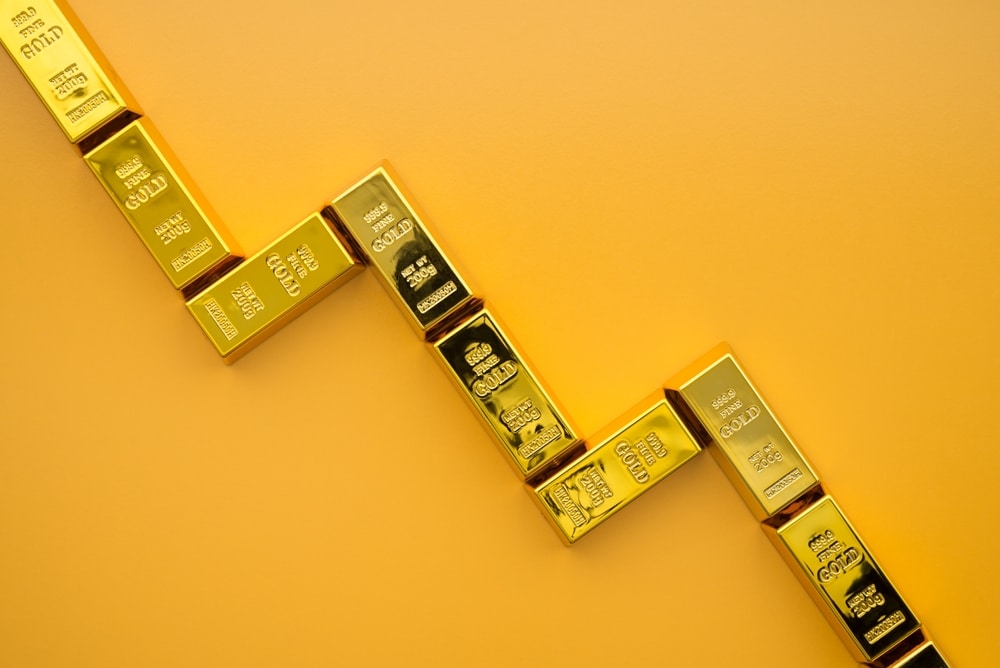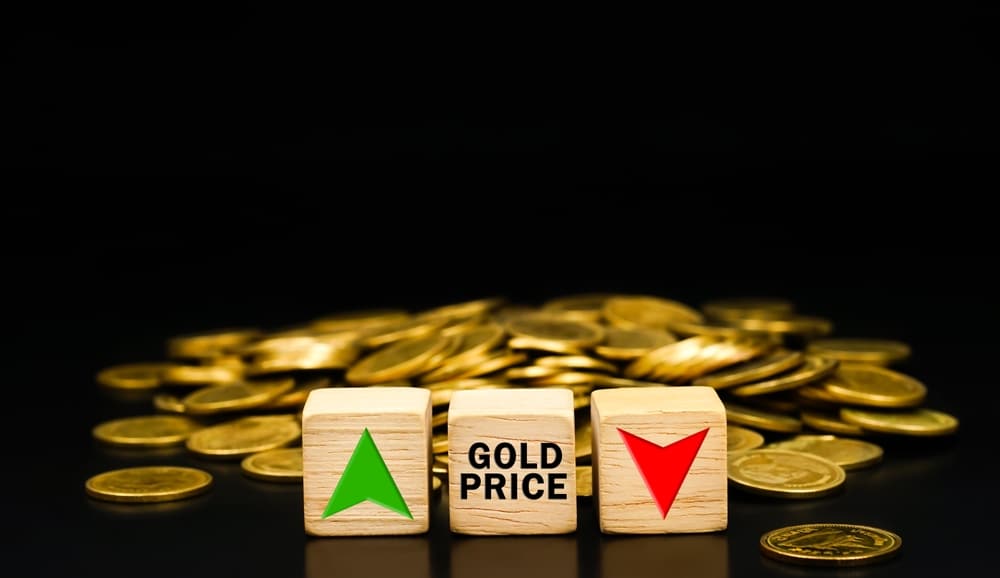
How Much Gold is in One Cell Phone? (And What’s it Worth?)
The many technological and industrial applications are among the biggest reasons to buy gold, as demand for the precious metal in this sector is only growing. Gold is a vital component in many of the electronic devices we rely on each day, including cell phones, computers, and various other products. We all know gold is a valuable resource, so you might wonder just how much of this rare metal you’re carrying in your pocket.
In this article, we’re going to dig a little deeper into why gold is so important to modern technology. There are numerous reasons that this element is irreplaceable in our personal devices, so you need to know how this affects demand on the metal. We’ll break down exactly what quantity of pure gold you might find in your laptop or smartphone, as well as where these tiny gold mines are located. We can use this information to calculate what the gold in your cell phone is worth, as well as every other device which uses this metal. Finally, we’ll take a look at the newest development in the gold electronics industry; recycling old metal into new products.
The Global Gold Demand for Technology
The annual worldwide manufacturing of PC’s cell phones, tablets, and other electrical devices uses $21 billion worth of precious metals, including 320 tons of solid gold. Approximately 2500 tons of gold is mined across the globe each year, so technology doesn’t account for too large a proportion. However, there is a serious issue regarding our use of gold in technology. Like many other problems the world faces today, it centers around waste.
When electronic devices reach the end of their life and are no longer useful, they become e-waste (electronic waste). Unfortunately, only about 15% of the precious metals from e-waste are recycled; everything else ends up in a landfill. Aside from the dangerous health and environmental impacts of this waste, it’s a poor use of a finite supply. These figures tell us that 85% of all gold used in electronics is thrown away. That’s 272 tonnes every year.
The unused gold that’s now present in global waste hasn’t gone unnoticed. It’s led to a trend of people removing the small amounts of gold from old electronic devices, to amass, and sell for cash. There are now more cell phones (active and otherwise) in existence than there are human beings, so that’s a lot of gold being used for nothing. Read on to find out exactly why we use this precious metal in something as common as a cell phone, and how the ensuing gold waste can work as an advantage.

An iPhone contains about $1.82 worth of gold.
Why Is Gold Used in Cell Phones?
You might wonder why such a valuable and rare element as gold is used so widely throughout consumer electronics. Surely there are cheaper alternatives, one’s which don’t threaten an already finite supply. As a matter of fact, there is no other substance to equal gold for our uses. Part of the reason gold is so highly prized is it’s incredibly high conductivity. This is one of the physical properties which gives gold the high value it has today.
Gold can conduct an electric current much more effectively than copper. With low resistance levels, gold allows electricity to pass through without heating or otherwise damaging the metal circuitry. It also cannot corrode or tarnish over time, which can be fatal to intricate and fragile components. Gold is used in cell phones and other devices because essentially, it will work forever. For this reason, the metal can be reliably used where other options would fail over time.
For example, silver is a faster conductor than gold. However, silver will oxidize when exposed to the air, rendering it completely useless. On the other hand, gold is resistant to all forms of corrosion so humidity and environment don’t pose an issue. Another reason gold is used is that you only need incredibly tiny amounts. The density of gold means it can be hammered incredibly thin and still work as a reliable connection in a circuit.
Where To Find Gold in a Cell Phone
Solid-state electronics (without moving parts) use very low voltages, in these devices, the current can be easily and terminally interrupted by corrosion at contact points. This is where gold is used, as it can carry the current very efficiently without any risk of corrosion damage. The gold parts of electric circuits are incredibly reliable, and so used for the most fragile elements.
You can find gold inside your cell phone in tiny amounts. Connectors, switch and relay contacts, soldered joints, connecting wires and connection strips all use gold. You’ll find these gold metal parts in almost every electronic device, including calculators, GPS units, and small digital devices. Larger appliances such as televisions also use gold metal parts in these areas.
How Much Gold Is In A Cell Phone? (And What’s It Worth?)
In the average smartphone, you can find approximately 25 milligrams of gold. This is the equivalent of around 1 US Dollar. The exact quantity of gold in a cell phone varies between individual manufacturers, for example, the popular Apple iPhone contains 0.034 grams of gold, worth about $1.82. While this difference might seem minor, consider the number of cell phones discarded each year.
More than 152 million mobile phones are thrown away in a single year. Using the average estimate of 25 milligrams, that’s 3.8 tonnes of gold waste just from smartphones. According to today’s gold price, the gold in discarded smartphones is worth more than $2 billion USD. It’s no wonder that salvaging gold from cell phones has become a profitable business.
How Much Gold is in a Computer? (And What’s It Worth?)
Computers also use gold in their construction, in a slightly different way to mobile phones. As a more complex device, your personal computer needs rapid and accurate transmission of data from one component to the next. This requires an efficient and reliable conductor, made using a material which won’t fail over time.
Gold is the perfect choice to meet these requirements. The quality and performance of computers using gold metal connections are well worth the price of this precious metal. You’ll find gold used in edge connectors which are used to mount microprocessors and memory chips to the motherboard. Additionally, all plug-and-socket connectors used to attach cables contain gold as well. Without using this precious yellow metal in computers, our modern technology would be nowhere near as fast and durable.
The specific quantity of gold inside the average laptop or computer varies depending on individual e-waste recycling centers, and between manufacturers. However, on average there is about 1/5th of a gram of gold inside each computer. In smaller laptops, you’d find closer to 1/10th of a gram. That means there’s around $6-$10 USD of gold in every computer system around the world.
The majority of gold in any type of computer is found in the circuit boards. If you want to gather and recycle gold from old computers, you only need to collect the motherboards. “Mining” old gold from computer circuit boards can produce more metal than ore mines. One ton of laptop and computer circuit boards is estimated to contain from 40 to 800 times more gold than a ton of gold ore rock. This shows that the precious metals recycling industry can be far more lucrative than mining if you know the right places to look.
Recycling Gold from Consumer Electronics
It’s clear to see that there is plenty of money to be made from recycling gold from e-waste. However, aside from business opportunities, this process is vital to protecting the planet. The manufacture of various digital devices uses finite materials at an incredible rate, including precious metals, rare minerals, and plastics. The Earth’s resources will soon run out, so recycling consumer electronics is more important than ever.
It isn’t just gold that ends up in landfills through discarded cell phones. Other elements that can be recycled include silver, copper, tin, cobalt, and palladium. The plastics used in the construction of mobile phones pose an issue as well, but these can also be recycled. If larger companies begin using recycled plastics instead of new ones, the positive impact on the environment would be huge. Recycled plastic needs one 1/10th as much water and energy as new plastic, and produces much less CO2 emissions.
Huge corporations such as Dell and Apple, who lead the market in consumer electronics, have started to catch on to this huge waste of materials. Many such companies now run successful recycling programs to extract useful materials from outdated electronic devices, and use them in new products. Apple’s 2016 environmental progress report shows us there’s a massive difference that can be made with cell phone recycling programs. From 90 million pounds of waste gathered for the purpose of extracting materials, 61 million pounds was reusable and useful. As one of the world’s leading technology pioneers, Apple is setting an example that others will be soon to follow. The double benefit of cheaper materials combined with a reduced environmental impact will no doubt attract other industry leaders to start their own e-waste recycling programs.
Let’s take a closer look at just how successful Apple was in its efforts. By recycling a huge 90 million pounds of old iPhones, iPads, and Macs, the company was able to recover:
2204 pounds of gold: That’s more than a ton of the world’s most valuable precious metal or 32 thousand troy ounces.
- Remember only tiny quantities of gold are used in each device but combined it’s worth more than 40 million US Dollars.
- 23 million pounds of steel: At about 0.01 cent per pound, that’s $230,000.
- 13 million pounds of plastic: If each ton of recycled plastic reduces just one ton of carbon emissions, that 6500 tons less in our atmosphere.
- 12 million pounds of glass.
- 4.5 million pounds of aluminum.
- 3 million pounds of copper: The current price of copper is about $2.60 a pound, so Apple’s recycled copper is worth nearly $8 million.
- 6600 pounds of silver: This precious metal saved Apple close to 1.7 million dollars.
Gold is clearly the most lucrative precious metal to recycle from e-waste, but other materials hold serious benefits as well. Aside from saving money, recycling these materials is better for the planet, and a great business idea too. By offering trade-in programs in their stores, Apple customers can exchange their old models when buying a new iPhone. This makes collection easier for Apple and gives customers a great opportunity for a discount.

Today, a staggering 80% of gold and silver from cell phones ends up in landfills.
The Future of E-Waste and Gold Recycling
The United States produces more e-waste than any other country in the world. In 2012 alone, this country generated over 3.4 million tons of electronic waste. An estimated 20 to 50 million tons are generated worldwide each year, which includes millions of laptops, smartphones, and mobile devices. As tech companies release new versions of old cell phones or tablets, consumers throw away working devices in favor of the latest model.
Luckily, trade-ins are gaining popularity and the precious metals in these devices are recycled. The e-waste recycling industry is growing, but currently, more than 80% of gold and silver in electronic devices still ends up in a landfill. One factor affecting America’s e-waste concerns is that about 70% is shipped to developing nations. Some materials of value are extracted there, but sometimes the devices are burnt in the process. This can be harmful to both the environment and human health.
The news isn’t all bad when it comes to e-waste; new breakthroughs in recycling technology are happening all the time. Recently, chemists introduced a new method to remove gold from old cell phones. They remove the circuit boards (where almost all the precious metals reside) and place them in a mild acid that dissolves the metals. Then, a special chemical compound is added in an oily liquid, extracting the solid gold. This process is far more environmentally friendly than previous options, resulting in fewer toxic environmental and health implications.
Dell has recently introduced its own recycling program, recovering gold from old computer motherboards. Dell uses gold recovered from used electronics in new computer motherboards, in flagship laptop models. Meanwhile, the recycled gold is also used to make jewelry in partnership with sustainable programs, to create 14- and 19-carat gold rings, earrings, and cufflinks. Procuring gold from recycled technology can be much more efficient than mining from the earth’s crust. There is up to 800 times more gold in a ton of motherboards than a ton of ore and has less than 1% of the environmental impact.
Since beginning its program, Dell has recycled more than 50 million pounds of e-waste into new products. With drop-off programs at Goodwill, it’s easy to participate in their recycling programs and get rid of your old electronics in a responsible way. More and more companies and individuals around the world are reducing the impact of their products by recycling gold, precious metals, and other materials from used products.
Apple and Dell save millions by recycling gold from old unused devices, and individuals can profit as well. With around $1.50 of gold in the average cell phone, and so many mobiles and other devices are thrown away each year, there are more opportunities than ever to make money from e-waste. Gold prices are likely to continue rising, so even the tiny amount of gold in your mobile phone has value.
What is the Gold in a Cell Phone Worth?
Numerically, the gold in the average mobile phone is worth up to two US Dollars, but it has much more potential than that. Gold can be “mined” from smartphones and motherboards more efficiently than it can from the earth, at a fraction of the fiscal and environmental cost. Similarly, other metals, plastics, and various materials can be recovered from old electronic devices like gold. These also have value and can be reused in the production of new products.
If you’re wondering what to do with your old cell phone, there are a few options available. You could try to extract the gold yourself, however, the cost of the materials outweighs the value of a few milligrams of gold. To extract the equivalent of a one-ounce American Eagle, you’d need the gold from more than one thousand cell phones. Extracting gold from cell phones is only ideal if you have a large quantity, this way it’s a lucrative business. You could sell your old phone to a company that buys up devices for parts, likely for more than the value of the gold.
Alternatively, if you have an old Apple model, you can trade it in for the new iPhone! Your discount will be significantly higher than the gold content in your device, and those old materials will go on to Apple’s recycling program. Other brands have similar processes, where your old tech can be remade into brand new products. Everyone benefits in this scenario, whether through a discounted product, cheaper materials, or the ecology of the planet.











